August's Postcard from (not quite) Rome
I love the slightly sticky languid torpor of August in Italy. At this time of year, like candles and lipsticks, time melts slightly. Roman Augusts certainly don’t have same level of tumbleweed rolling through the streets as they did when I first arrived twenty-five years ago and nary a shop or bar were to be found open. Though outside the centre of town that’s still pretty much the vibe for the middle two weeks of the month, oscillating around Ferragosto. Ferragosto is a fundamental fulcrum of the Italian calendar. A couple of previous (free) posts I’ve written about Ferragosto are here and here.
I take a pause from tours for much of August, ready to return with renewed vigour and enthusiasm and freshly sharpened pencils in September, but Rome is always in my mind and I’m perpetually planning new itineraries. This summer’s peregrinations began in Turin. The Romans called Turin Augusta Taurinorum, a fusion of the Roman colonisation and the pre-Roman inhabitants: literally it means Augustus’ city of the Taurini.
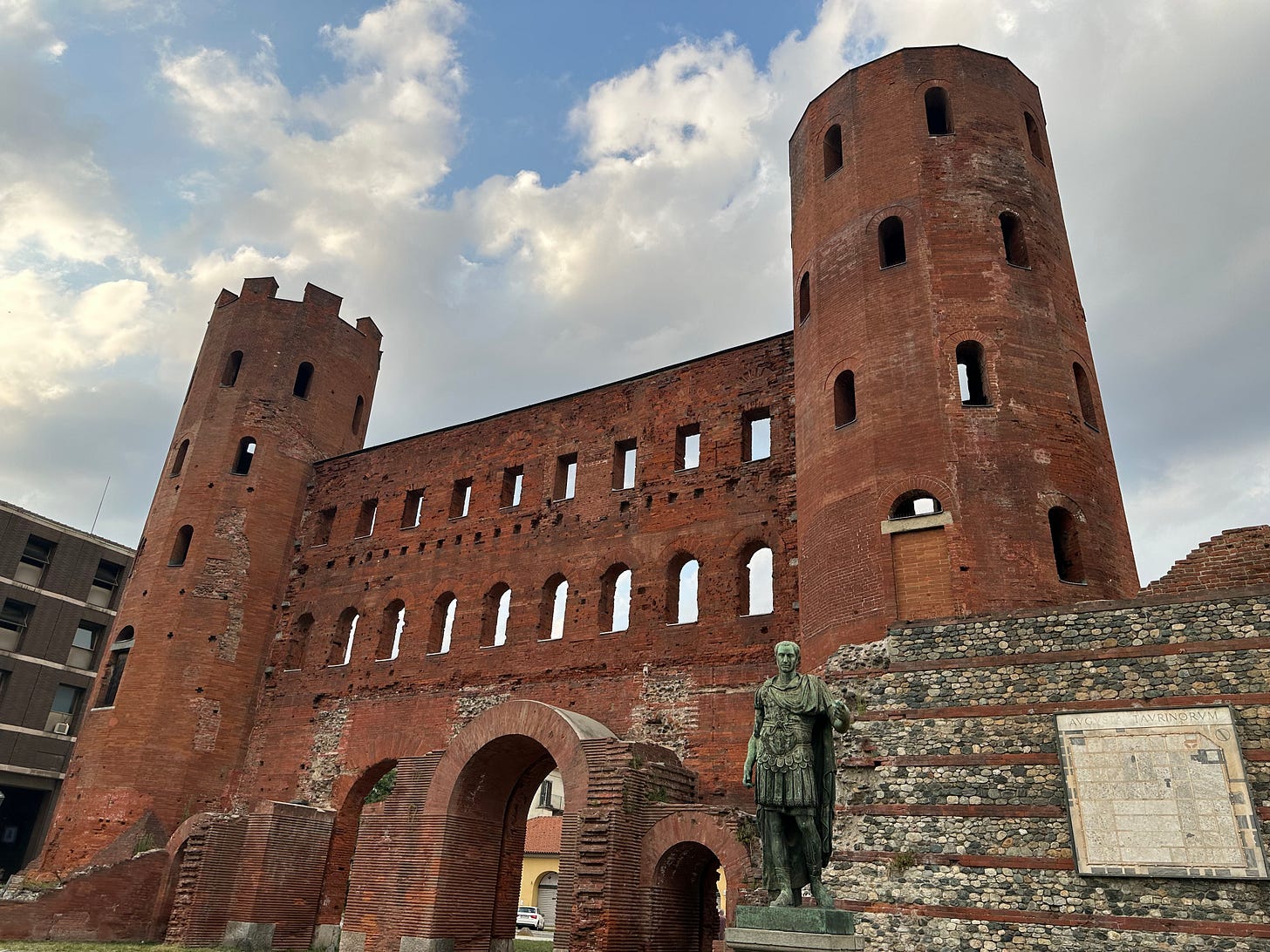
The Taurini, a Celtic-Ligurian tribe, perhaps took their name from the bull (taurus) which is still the symbol of the city and which legend said had defeated a fearsome dragon. I’m all in for any etymological story which involves a fearsome dragon.
Less legendarily the Taurini had been loyal to Rome, seeking to block the progress of Hannibal as he crossed the Alps with his fabled elephants in the late third century BCE and bravely holding him at the Po for three days before succumbing. One and half centuries later, during the Gallic Wars, Julius Caesar founded a military outpost on the site of the destroyed settlement.
The outpost became a colony in 28 BCE, a couple of years after Octavian’s victory over Mark Antony and Cleopatra at Actium. The following year the Senate would acclaim him with the title Augustus (an extremely clever title; both with sacred and ancient overtones, and crucially untainted by precursors, but that’s a subject for another time).
While there, and as previously scudding clouds darkened ominously, I was particularly taken with this view by the Palatine Gate of the Roman walls, beautifully framing both the chapel added by Guarino Guarini to the cathedral to house the Turin Shroud, and the cathedral’s fifteenth century bell tower.
Exquisite Baroque curves oscillate in harmony with the vestiges of the Roman past of Italy’s first capital, and beyond is the exquisite late quattrocento facade of the cathedral.
An inscription on the facade bears the date 1498 and the name of Cardinal Domenico della Rovere, then Archbishop of Turin. Domenico was scion of the noble Piedmontese branch of the della Rovere family and was appointed both cardinal and archbishop by his distant relative, the notorious nepotist Pope Sixtus IV.
It was Domenico who rebuilt the cathedral with this elegant facade, and the elegantly early Renaissance inscription alludes both to him, to the reign of Pope Sixtus (who had died in 1484), and to Filiberto II, Duke of Savoy who had only just acceded to the throne at the age of seventeen when work on the cathedral was completed.
The elegantly quattrocento doorcases are decorated with refined candelabra and fantastical figures, fusions of animal and human elements known as grotteschi (more of which anon). These were inspired by the studies of Nero’s Golden House which had only very recently come to light, and which had also inspired the decorations of the Della Rovere chapel commissioned by Domenico and carried out by Pinturicchio at Santa Maria del Popolo in Rome which had been rebuilt by Sixtus.
The decorations of the Della Rovere Chapel certainly predate the facade of Turin Cathedral, though proposed dates oscillate across the 1480s. This is the cutting edge of modern design.
We drove up high above the city to the hill of Superga, there not so much to admire the eighteenth century basilica but because my brother wanted to leave a scarf in homage to the Grande Torino team who were killed when their plane crashed into the hill in May of 1949 in thick fog.
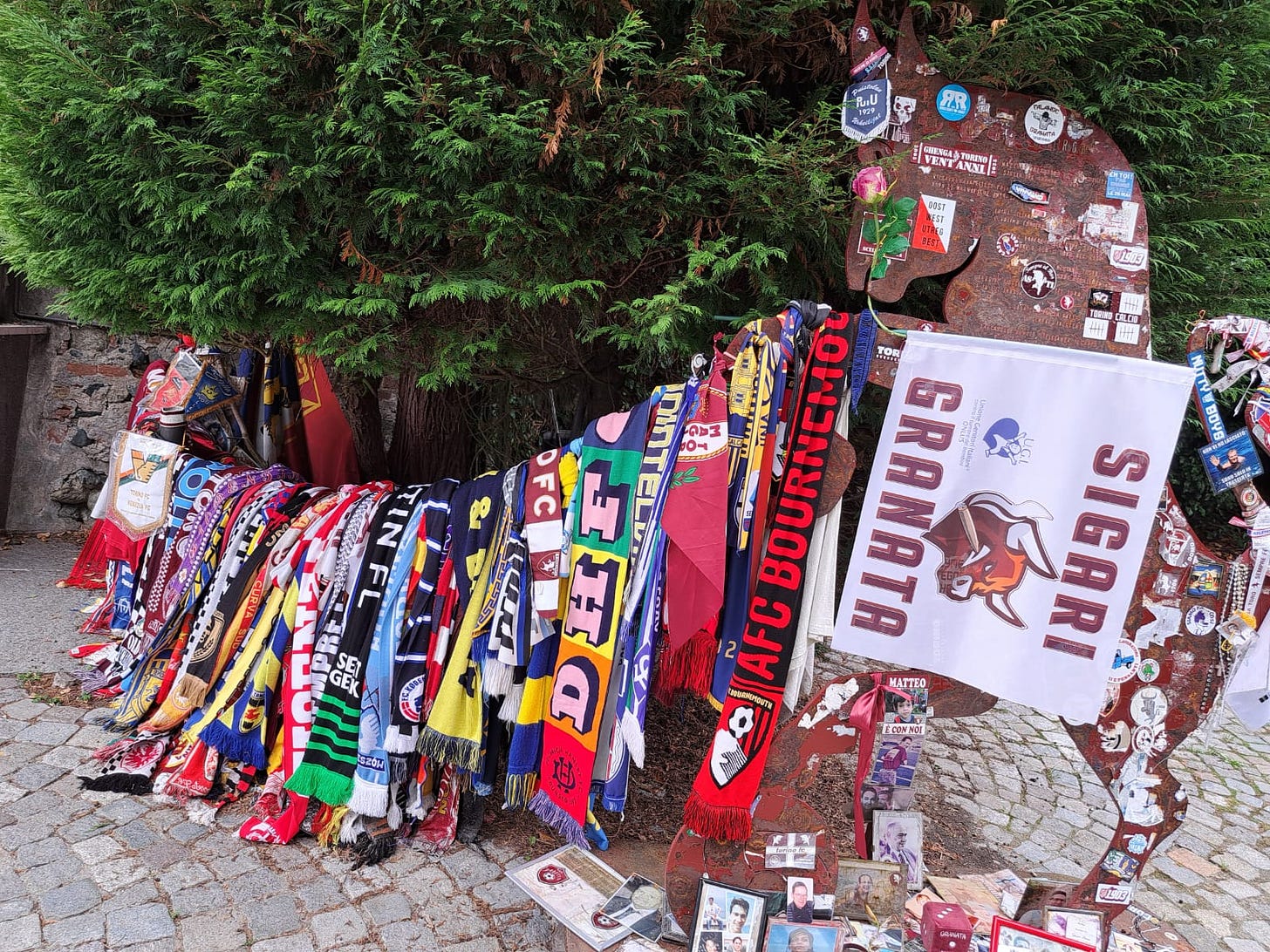
From the top of the hill I looked down upon the meandering Po and thought of Hannibal, and the camp of Julius Caesar; the colony of Augustus, and Domenico della Rovere’s emulation of Nero’s Golden House. And not for the first time I thought one really never is very far from Rome!
Saluti e buon agosto,
Agnes


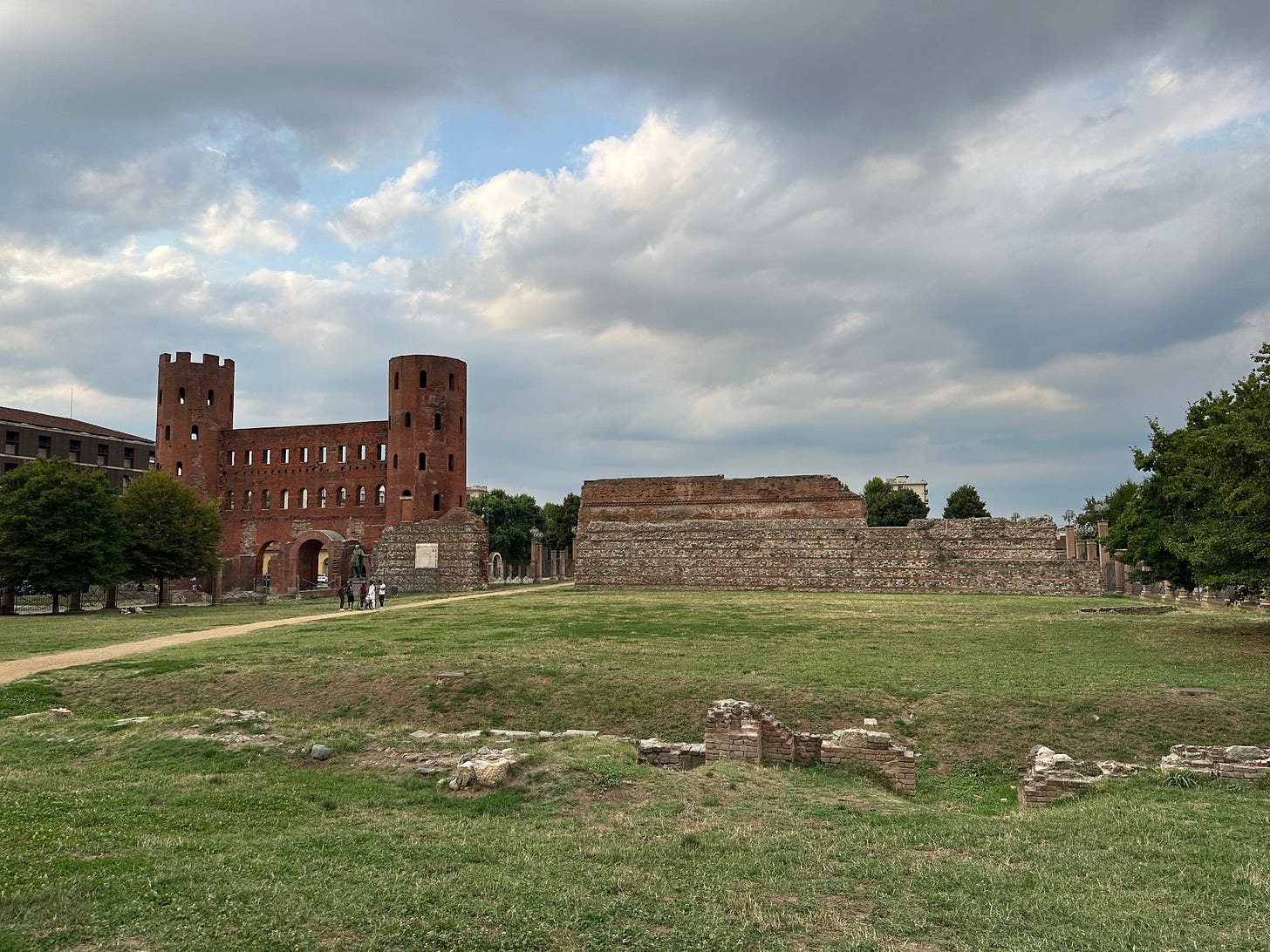

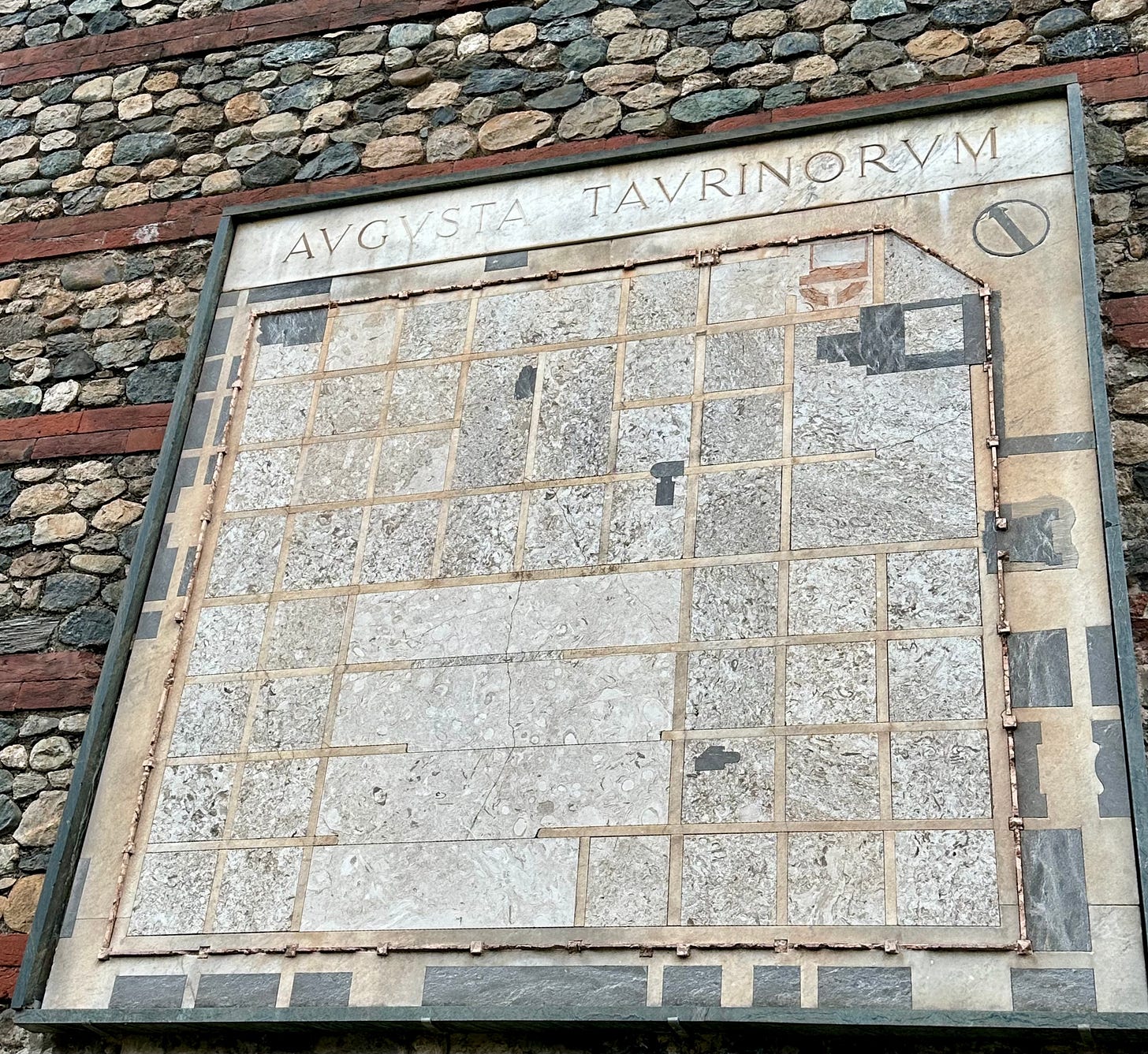
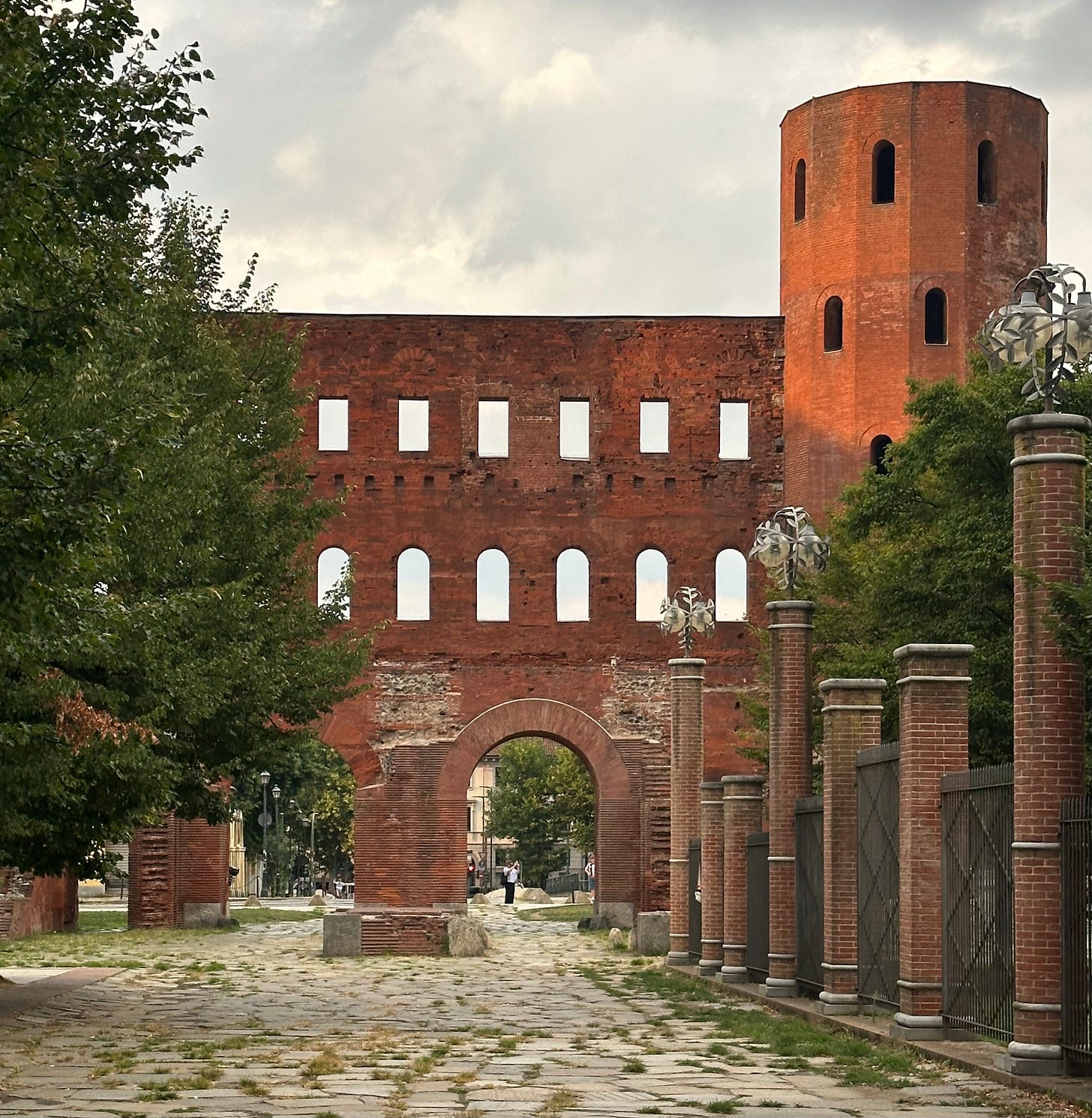

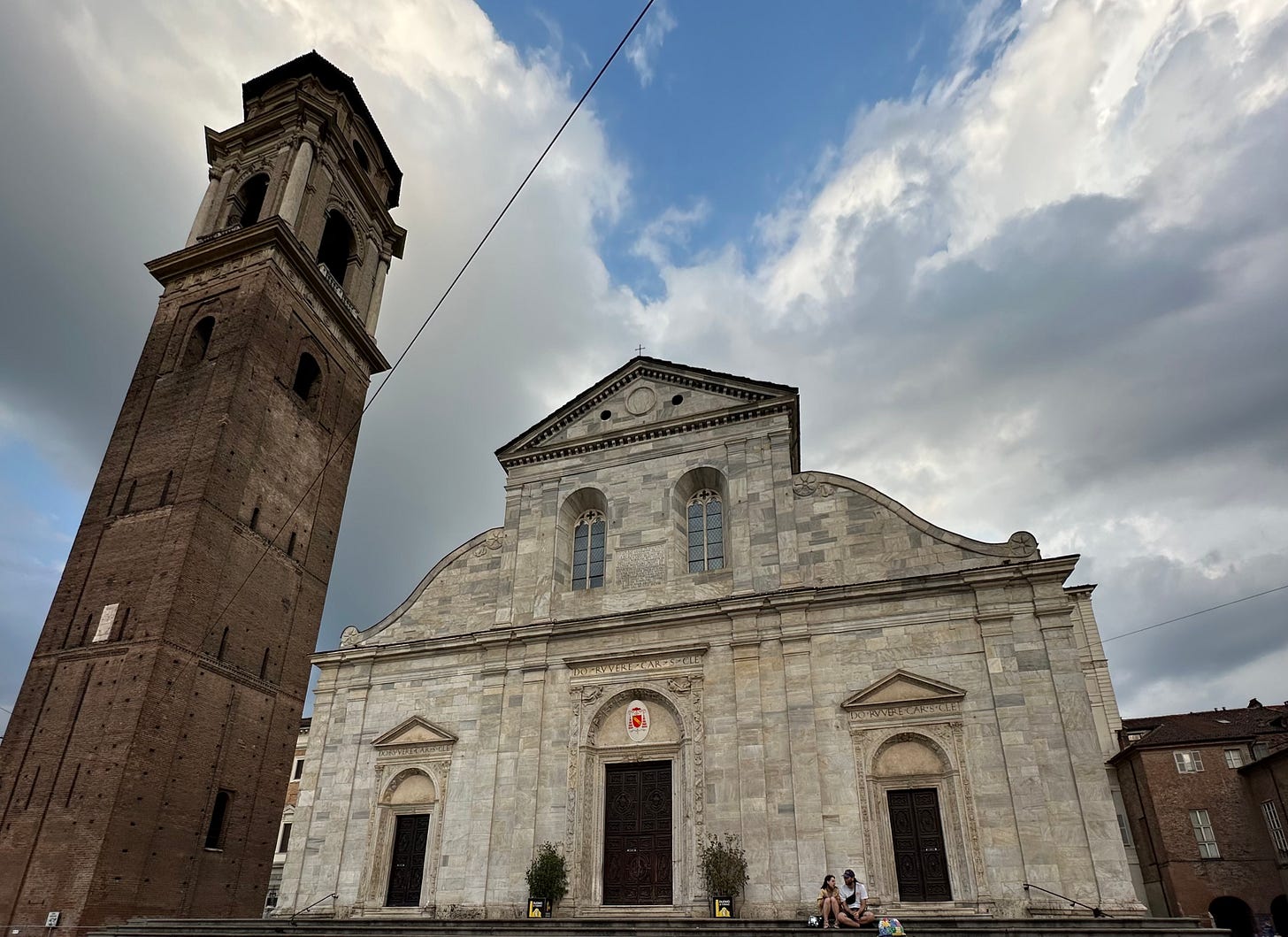
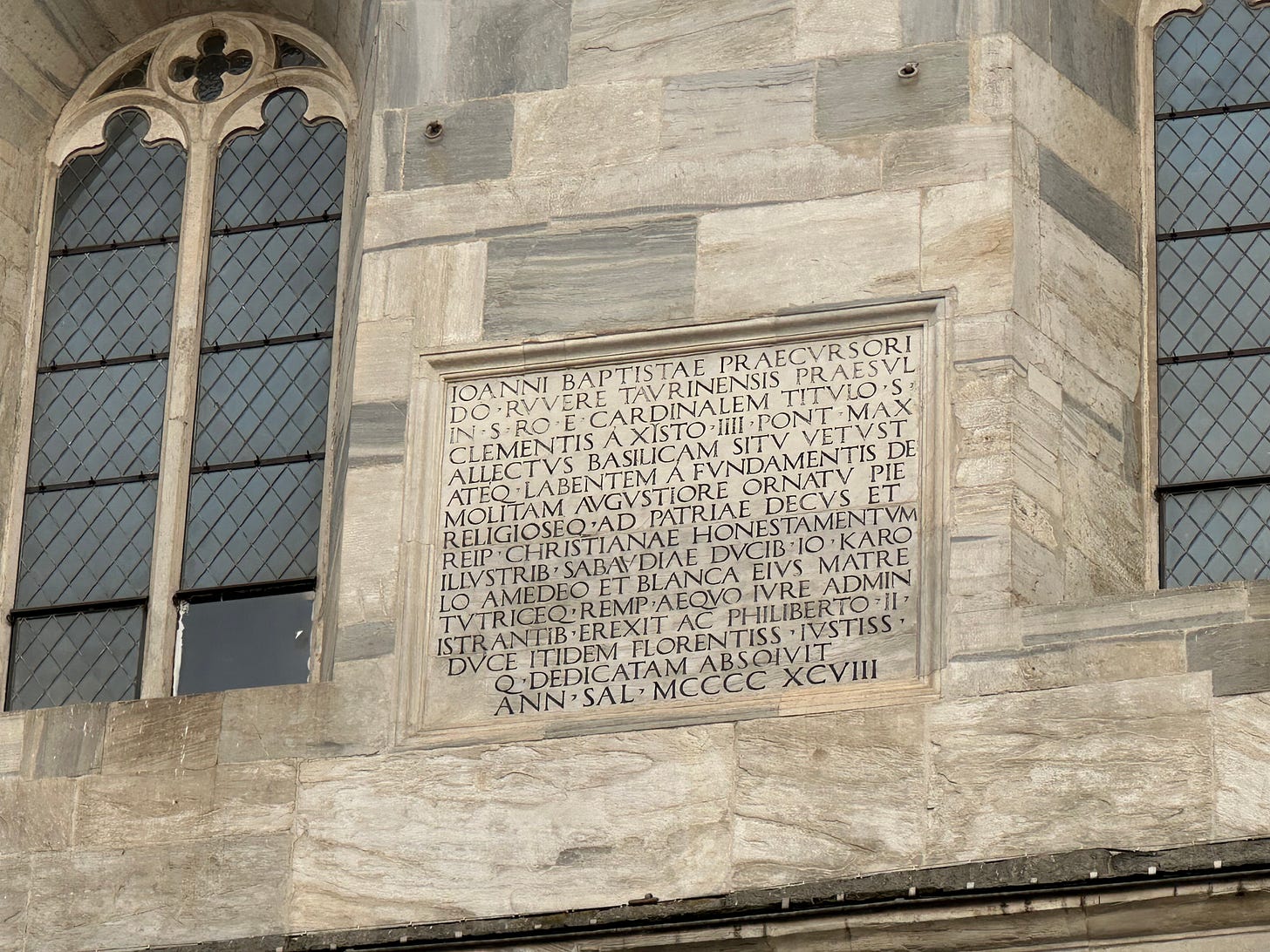
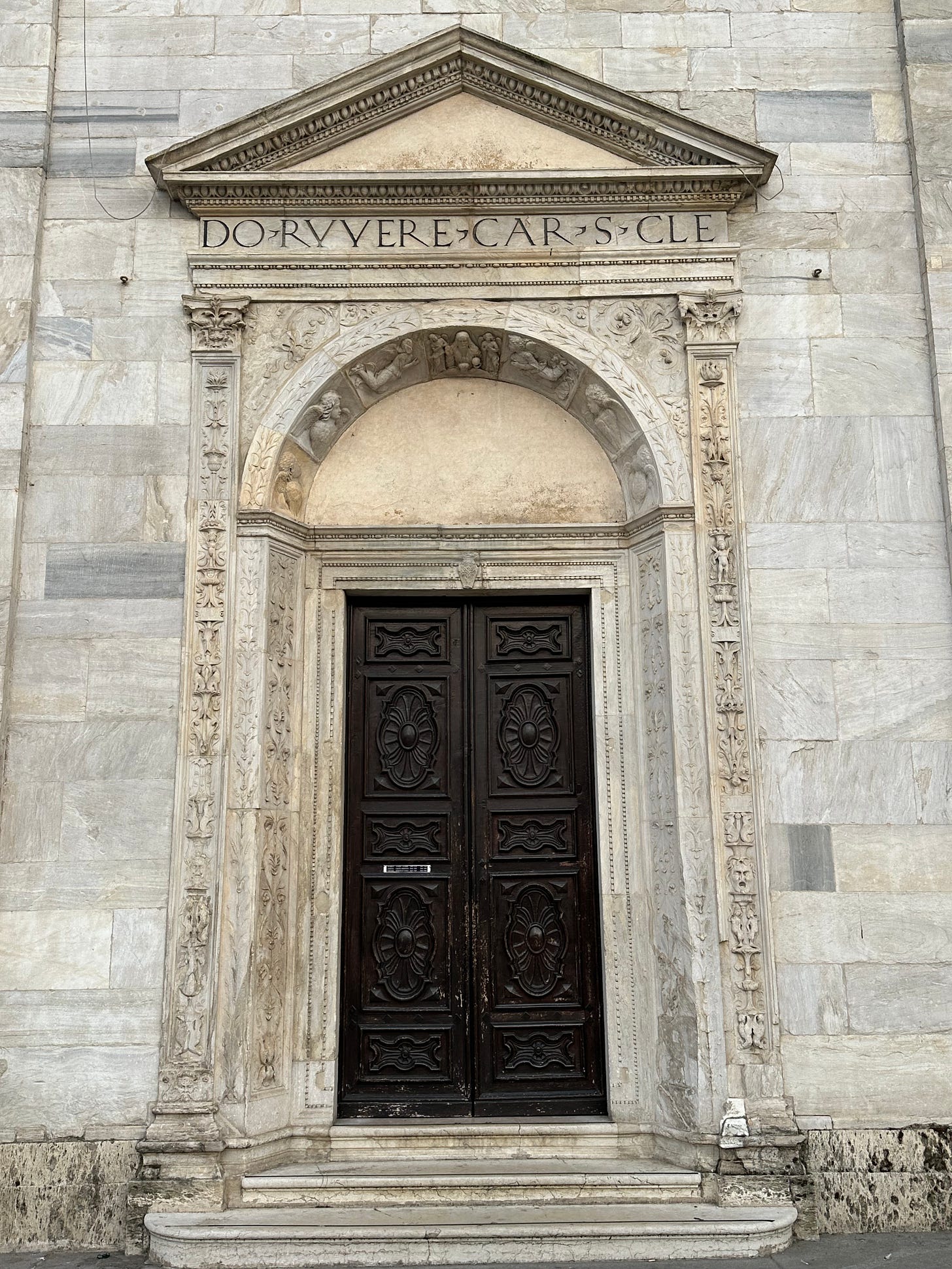
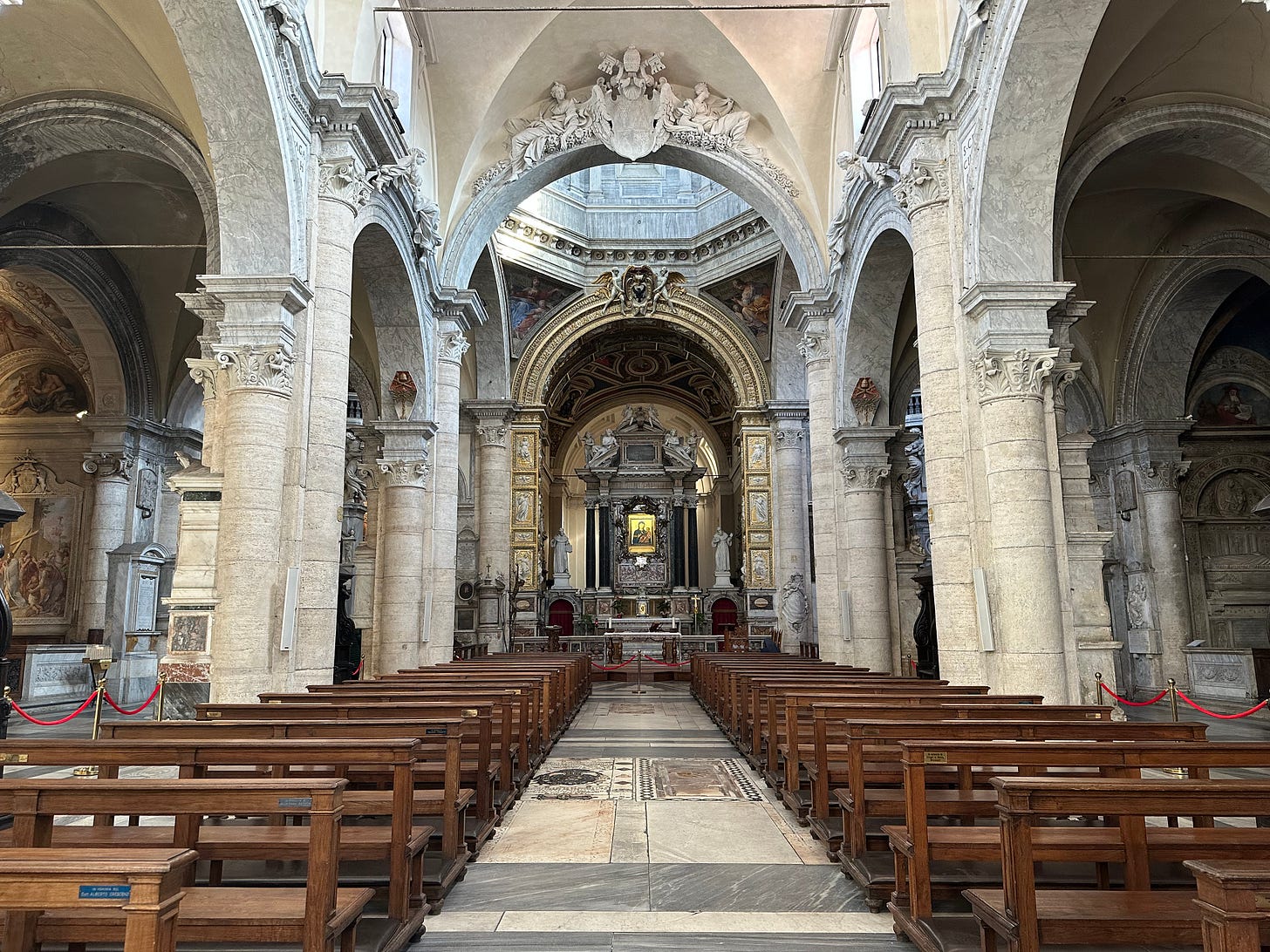

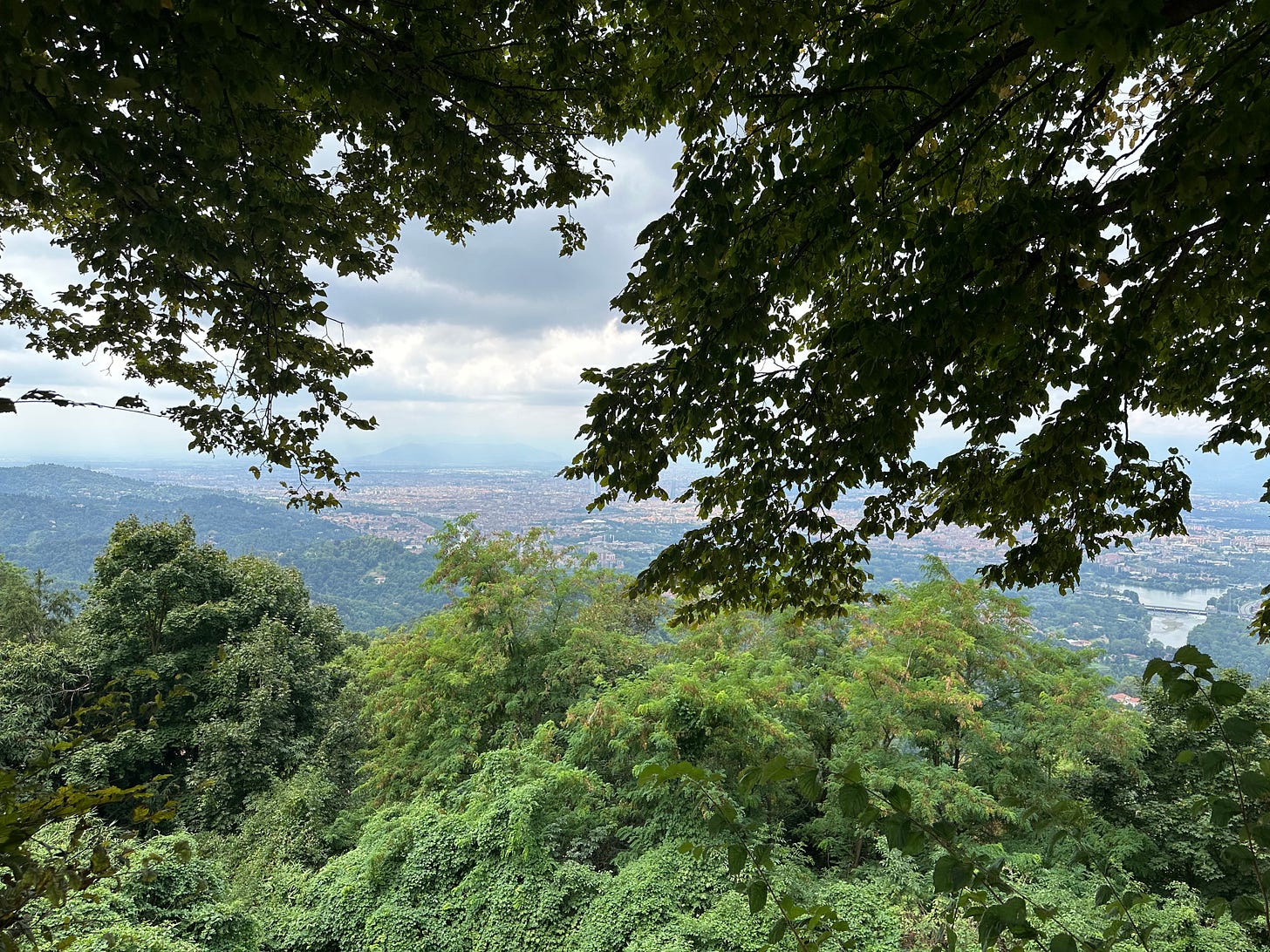
I’ve never visited Turin - never had the urge - but now after reading this article it’s on my list!
Always an inspiring newsletter... just like a college class! Thank You!!